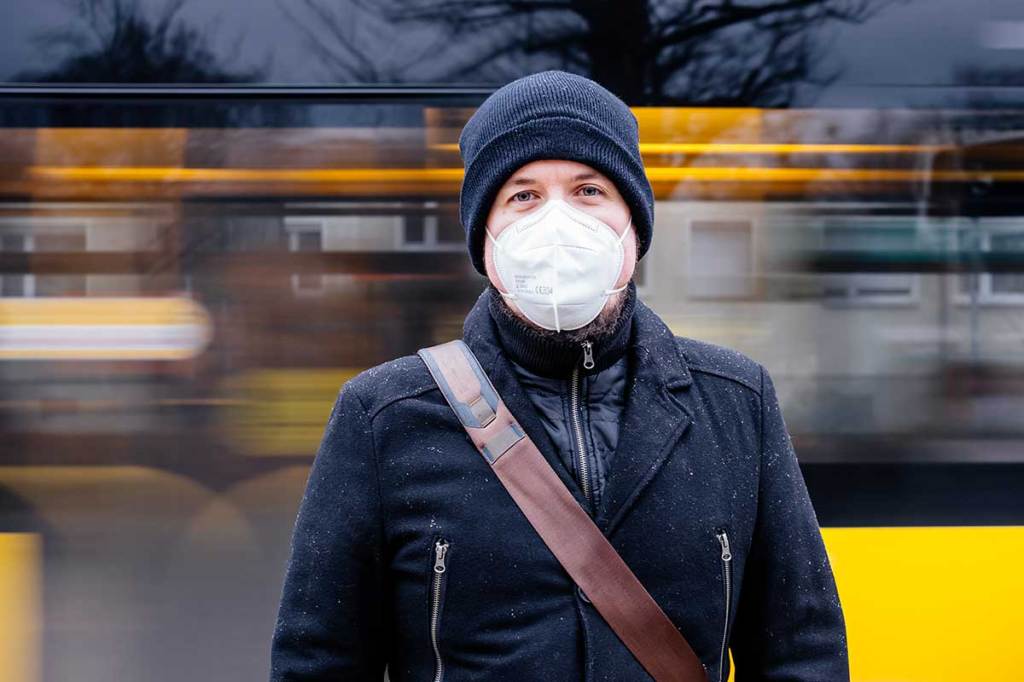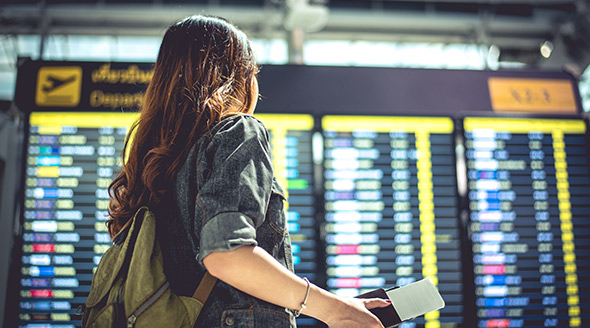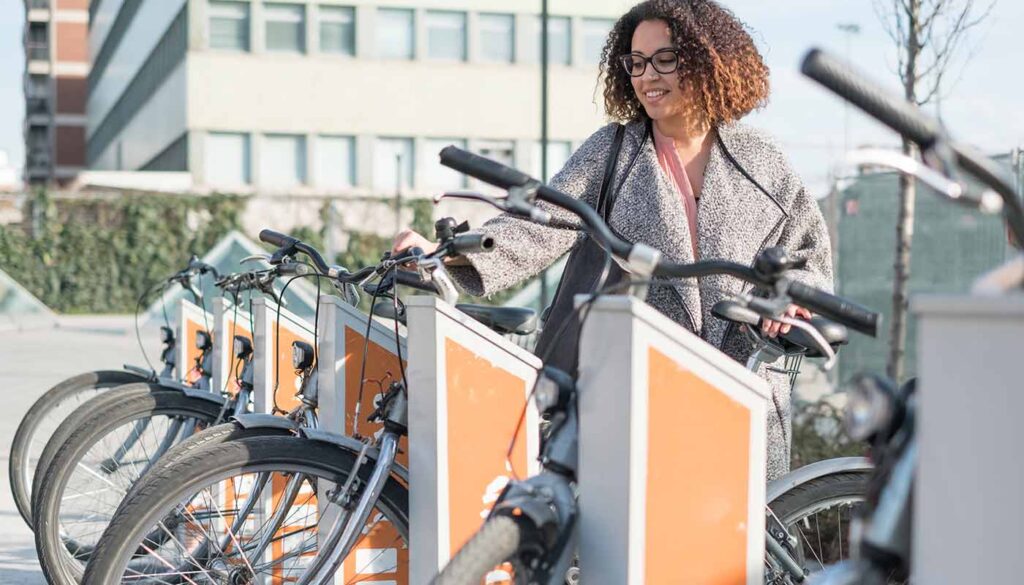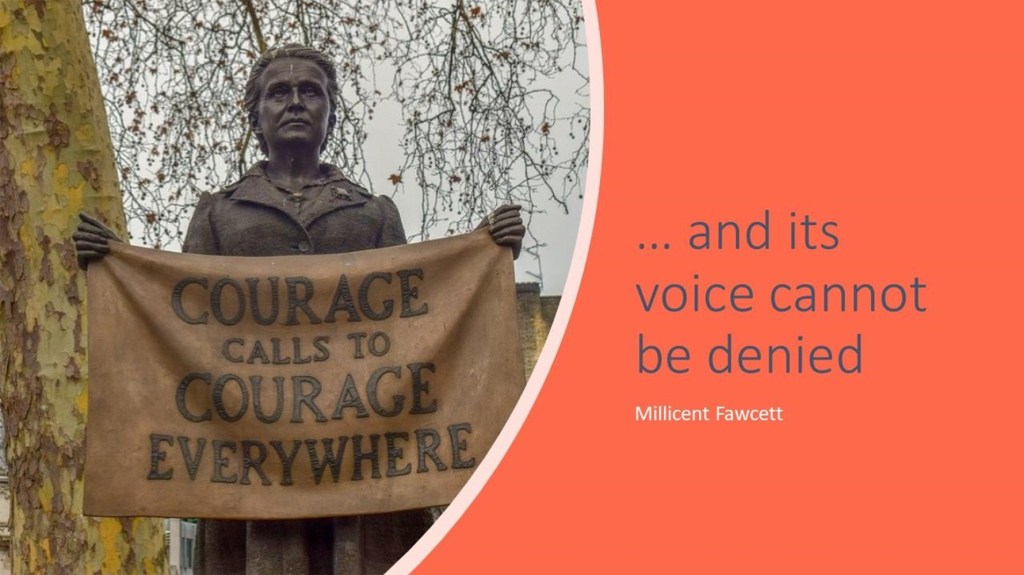Introducing the latest myCWT product and service enhancements
Building on our digital, omnichannel myCWT platform, our new products and services will simplify travel management for you and your employees – anytime, anywhere, anyhow.
Note: Featured services may not be available in your country at this time. Please reach out to your CWT representative for more details.
Hear from Chief Product Officer, Erica Antony as she shares the key product highlights of 2024, along with the key areas driving innovation.
-

2040: Baseline, Boom or Bust
As we enter an era of rapid transformation and unprecedented challenges, it is essential for travel managers, meeting & event planners, and corporate decision-makers to look ahead and frame our current strategic thinking with a clear vision of the future. Business travel and meetings and events (M&E) are poised for significant change over the next decade and a half, driven by a complex interplay of sustainability goals, technological advancements, evolving work models, and geopolitical dynamics.
In this paper to mark the 10th anniversary of our Global Business Travel Forecast, we explore, for the first time, a long-term vision of the future and potential trajectories through three distinct scenarios, each offering insights into how these forces should affect policy-making, budgeting and priorities. By examining these scenarios, we can better understand the diverse possibilities that lie ahead and the strategic imperatives required to thrive in each potential future.
Based on trajectory data analysis and interviews with industry leaders, behaviorists and climate tech founders, this forward-looking approach enables us to anticipate changes, strengthen our strategies, and make informed decisions that align long-term objectives. It is through this lens of foresight and adaptability that we can build resilience, seize opportunities, and navigate the complexities of the future.
We invite you to reflect on the insights presented, and consider how your organization can prepare for the opportunities and challenges that lie ahead. Together we can ensure that travel and meetings remain catalysts for growth, scalability and sustainable practices.
- Scenario development is both an art and a science
- Megatrends Shaping the Future of Business Travel, Meetings and Events
- Sustainability goals the new crux of corporate policy
- Technology Revolutionizes Travel Management
- Modern work models spark new travel patterns
- Changing demographics open doors to new opportunities
- Three Scenarios: Base case, boom and bust
- Future-proofing strategies

-

CWT GBTA Global business travel forecast 2025
When it comes to pricing, global business travel has finally reached an enduring, higher baseline. Prices will continue to rise in 2025, but only moderately, so expect a period of normalized growth.
However, this pricing environment, one of marginal gains and price regularity, is fragile. Global leisure travel has now realized a lot of its pent-up demand, while corporate travel has been resurgent, with 2024 edging at preCovid levels.
There are many factors at play, whether its volatile oil prices, labor costs and constraints, inflationary pressures, and geopolitical factors. As this elevated baseline edges upwards, albeit marginally, travel budgets will come under increased scrutiny, especially as travel patterns and attitudes change.
It’s why business travel can’t be viewed in a silo, and the true value to an organization must be fully realized. This forecast can help with those calculations.

-

Capitalize on emerging technologies in corporate travel
Technological advancements are accelerating at an unprecedented pace. How will emerging innovations like Generative AI, blockchain, and self-sovereign identity (SSI) transform corporate travel?
BTN and CWT probed global CEOs, travel managers, industry consultants and tech experts on the promises, questions, and expectations these innovations raise and how they are set to reshape traveler experience, cost control and service delivery in corporate travel and events.
Download and discover
- The technologies that will have the greatest impact on corporate travel in the next 2-5 years
- How these emerging technologies are poised to control costs, enhance service and security, and boost efficiency
- The critical challenges, opportunities, risks and roadblocks each innovation raises
- What travel managers, buyers and experts anticipate from these innovations

-

Open for Business: What matters in travel right now
COVID-19 has changed nearly every organization; it’s certainly changed the business travel world. Despite benefitting from video conferencing services (e.g. Zoom, WebEx, and Skype) we have realized that what matters most is the human touch. The smiles. The eye contact. The ability to read a room. Coffees with colleagues or lunch with prospective clients.
The pandemic temporarily took these away. But the wheels of business are pushing forward as lockdown measures change and/or ease. Face-to-face interactions will return, and businesses and people are eager to thrive in new relationships, forge new ideas, prevail through innovation, and grow. Together, we can positively assist this return.
Without a doubt, the opening of green lanes between select destinations and important business travel markets like China and Singapore, as well as the gradual resumption of bigger meetings and events, are viewed as positive developments by our customers who are keen to travel and meet face-to-face again. However, it’s still early days and companies are generally in ‘wait-and-see’ mode trying to determine the resilience and stability of these arrangements, so we can’t yet be certain how successful these initiatives will be in restoring confidence among corporates and their traveling employees.
Keep your travelers informed
We’re also seeing companies and travelers seeking a lot more information prior to traveling. In response, we are introducing new tools and technologies to help travelers make informed decisions. For example, our CWT Travel Essentials search provides information on applicable restrictions, procedures and travel requirements based on specific travel itinerary details such as trip origin, destination, travel dates and traveller nationality. CWT also partners with organizations like International SOS to send our clients and their traveling employees regular safety and security alerts about developments around the world that might impact their travel plans – these are sent via email and also as push notifications through our mobile app.
Stay in the system
Health and safety, as well as duty of care, will be paramount. Booking within a company’s authorized booking channel will be even more relevant for buyers and travelers – keeping the traveler inside the system will be key. Increasing hotel attachment rates (hotels being booked via the travel management company at the same time as air/rail) will be extremely important to determine where travelers are at a given point in time, as well as where they have traveled to in the past – as now a company’s duty of care may actually extend beyond the trip, for example; contact tracing purposes.
Business travel generates a lot of value for businesses. Research by Oxford Economics has shown that for every dollar invested in business travel, companies realize $12.50 in incremental revenue. Furthermore, a survey of business travelers in June 2020 by consulting firm Oliver Wyman, around three-quarters said they intend to travel the same amount or even more when restrictions are lifted. As such, we are confident that a hugely sustainable market for business travel will return, as we emerge from this crisis. However, all stakeholders involved including travel management companies, airlines, airports, hotels and governments will need to work closely together to create an environment where companies and their employees feel confident that it’s 100% safe to travel.
Let’s talk about focusing on what matters most as you relaunch and restart business travel: We need to let everyone know that we’re open for business and have built the necessary resilience into our daily lives to ensure health & safety is paramount in everything we do.
Image credits: Adobe Stock
-

Travel Toolbox – 3 ways to keep your people informed
Recent vaccine news – though being a cause for great optimism- may be making some people complacent, some scientific advisors have stated. Where there’s complacency for some, there’s anxiety for others.
Holidays like Thanksgiving and Christmas could usher in a surge in travel and busier airports, making now an important time to show your travelers that their safety and wellbeing are your primary concern. News of vaccines are cause for great optimism. For now, here are three ways to keep your travelers feeling confident in these fast-evolving times.
One-stop shop
Companies and travelers are seeking a lot more information prior to traveling. In response, we are introducing new tools and technologies to help travelers make informed decisions. CWT Travel Essentials search provides information on applicable restrictions, procedures, and travel requirements based on specific details such as trip origin, destination, travel dates and nationality.
Check mate
With a barrage of information available, a simple checklist helps busy employees sort through the noise and find out what to pack, prepare for and do, before, during and after travel.
Testing times
Countries around the world are relying on Covid-19 testing to revive travel but it can be hard to find out which tests are required for different geographies. Find a regularly updated resource list to help travelers know which tests are required
Image credits: Adobe Stock
-

Covid-19: 5 steps to prep for another wave
In many countries globally, we are seeing second waves and there may be more to follow. We are beginning to see light at the end of the tunnel with the highly-promising emergence of vaccines but there may be insufficient supply, at least initially, of a single vaccine.
Travel managers will continue to have a duty of care to fully understand the risks inherent in the destination of their travelers and to fully educate and prepare them to mitigate the risks associated with Covid-19. Here are five ways that employers can support their travelers in the event of a spike in cases:
- Fully understand the travel destinations and their protocols for Covid-19.
- Anticipate an increase in cases, shut-downs of transportation, and lockdowns within cities.
- Have a thorough plan in place.
- Prepare travelers to stay much longer than they initially plan—make ample medications, housing, food, and supplies available for an extended stay.
- Instruct travelers that if they want to leave an area to do so as soon as possible, while flights remain available.
Organizations must have constant access to reliable information and a means to get this intelligence to travelers before, during, and even after the trip. They need to be nimble to respond to a rapidly changing environment and prepared to respond to significant changes if a situation arises including changes to health infrastructure, the introduction of lockdowns, stay-at-home orders, and regulations regarding social distancing.
Have a plan, and expect the unexpected.
Listen to Dr. William Hauptman, M.D, Medical Director Assistance, and Andrew Miller, Director of Partnerships for the Americas Region, both from International SOS, share advice and guidance on why travel managers should reshape their policy to meet the evolving demands of a world challenged by COVID-19.
Image credits: Adobe Stock
- Fully understand the travel destinations and their protocols for Covid-19.
-

Podcast: How to revise your travel risk policy during unprecedented times
The pandemic has forced businesses to take a closer look at their travel risk policy. What is in place now and what do you need to adapt to make it work for your business and employees?
Dr. William Hauptman, M.D., Medical Director Assistance, and Andrew Miller, Director of Partnerships for the Americas Region, both from International SOS, share advice and guidance on why travel managers should reshape their policy to meet the evolving demands of a world challenged by COVID-19.
[buzzsprout episode=’6532795′ player=’true’]
-

Out of Isolation: 3 rules for employee mental health
Duty of care for companies is typically focused on protocol and practicalities such as travel alerts and tracking. But there’s no doubt that the link between mental health, lockdowns, and the associated uncertainties of the pandemic is real. We cannot talk about duty of care in isolation, without addressing one of the most pressing issues of the current climate.
Employees contend with increased workplace stresses related to working from home, work/life balance, fear of being laid off, loss of control over how work is done, and anxieties around getting infected with Covid-19. In the U.S alone, Pew Research reports that over a third of Americans experienced high levels of psychological distress during the coronavirus outbreak. The implications of these stresses can lead to very serious issues such as substance abuse and suicidal ideation.
All of this increases with travel; add in usual components like jet lag, time zone changes, loss of support structure, increased stimuli, change in sleep and diet, alcohol, and lack of exercise. Anxiety and depression are the two main manifestations (symptoms) of stress and they are exacerbated when employees travel for work. In fact, their likelihood can increase by 54% and 62% respectively (from baseline) after 14 nights spent traveling for business. Here are three steps that companies can take to support their employees as part of a proactive duty of care plan.
- Provide psychological support – Provide resources to support staff in a variety of ways such as by telephone, FaceTime and Skype.
- Make sure that everyone is aware of the resources available – When people are experiencing mental health challenges such as distress, burnout or anxiety, they are not always in the frame of mind to know where to go. Raise awareness to ensure resources are front of mind and easy to access.
- Make resources available 24/7 – Make sure that your people know that help is available in a crisis, no matter the time or day.
De-mystifying mental health issues and bringing them to the forefront of discussions inside and outside of the workplace is a fundamental step in addressing this epidemic. Organizations must build a culture of health for their employees, and destigmatize mental health issues to allow employees to feel safe and comfortable to come forward and ask for help.
Image credits: Adobe Stock
- Provide psychological support – Provide resources to support staff in a variety of ways such as by telephone, FaceTime and Skype.
-

Passion in a pandemic: Judging the business travel journalism awards 2020
It has been both painstaking and an honour to judge the ‘Oscars’ equivalent for business travel journalism – the Business Travel Journalism Awards 2020 (BTJAs). In a year where demand for sources of trusted information, news and insight has soared – the task of selecting winners amongst a sea of outstanding individuals and teams that have so greatly contributed to the business travel media landscape has been a tough gig.
Now in its 17th year and open to journalists globally, this year’s awards attracted high-calibre entries from Singapore to County Kildare and Queensland to New York, with a 22% increase in category submissions versus the last year, across all ten categories. Whilst many of the entries centred around the pandemic’s impact on our industry’s health, wellbeing and resurrection, there was a healthy dose of COVID-unrelated scoops, campaigns and front-page splashes too, all of which showed the tremendous work the press is carrying out throughout this difficult time.
This year’s 12-strong judging panel – made up of business travel heavyweights, ranging from communicators to consultants and buyers to suppliers – virtually reviewed 153 entries and 258 associated articles throughout October. Looking through the submissions was like digging through a goldmine of inspiring journalism. And deliberating over every entry, impartially and fairly scoring each against set criteria and ultimately agreeing on the ten BTJA 2020 winners saw the panel collectively rack up 132 (approx.) of judging hours.
During the judging process, it was a sentence in one award entry that for me, nailed the essence of why – especially during (and hopefully sometime soon coming to the end of) such a tough period – we need to celebrate the best of the amazing journalism which has come out of it:
“This subject was (SIC) important to our niche audience – or at least it was important until Covid came along and made so many prevailing concerns in our BC (Before Coronavirus) world pretty redundant.”
So, my congratulations go to every single entrant, short lister and winner of this year’s BTJAs. It’s been a privilege to be a judge this year, allowing me to understand the graft, pride and passion poured into each and every article submitted.
For more info on the winners, check out this video.
-

2020 Business Travel Journalism Award (BTJAs) winners named
Ten entries, featuring notable explanatory and investigative travel reporting on the global COVID-19 pandemic, are among the winners of the 2020 Business Travel Journalism Awards, which honor journalists from national, consumer, broadcast, and trade media.
Ben Slater, a staff writer for Which? Travel, won Scoop of the Year for a revelatory piece and subsequent social campaign, exposing travel companies not adhering to refunds for bookings due to COVID-19. A team of reporters for BTN won for their breadth of analytically geared reporting and the ingenious launch of digital products to support their evolving reader’s needs, throughout the pandemic. Francesca Street of CNN was honored for her insightful look at the application of technology and data to improving the travel experience.
Awards also went to journalist newcomer, Holly Patrick at Meetings & Incentive Travel, for her keen eye for detail and writing flare, and Gill Upton, freelance contributor for The Business Travel Magazine, for her entries in both the technology and the ground transportation feature categories.
Winners Trevor Baker and Jo Rhodes saw the Which? Travel team scoop a hat-trick of awards this year, respectively for their accommodation and air-related features, whilst Hannah Brandler of Business Traveller was a first-time winner for her Philadelphia destination feature. For the second year in a row, Andy Hoskins, BTN Editor in Chief, scooped the editor of the year award.
“2020’s global travel upheavals have certainly brought out the best in business travel journalism,” said Julian Walker, CWT’s Head of External Market Communications. “The talented and diverse writers highlight the critical importance of informed journalism – both on urgent issues of the day and on efforts to understand the complexity and evolution of the business travel industry. Our congratulations and thanks to everyone involved.”
Administered and curated by CWT, the BTJAs recognize distinguished business travel as well as meetings and events reporting for a general audience. Now in its 17th year and open to journalists worldwide, the BTJAs saw a 22% increase in entries versus last year, submitted from across four continents, with the winners judged by an expert judging panel of business travel and meetings managers, industry experts, and respected editors.
The full list of 2020 BTJA winners are:
- Best Journalist – Newcomer: Holly Patrick, Meetings & Incentive Travel
- Editor of the Year: Andy Hoskins, BTN
- Editorial team of the Year: BTN
- Features Journalist of the Year (Accommodation): Trevor Baker, Which? Travel
- Features Journalist of the Year (Air): Jo Rhodes, Which? Travel
- Features Journalist of the Year (Destination): Hannah Brandler, Business Traveller
- Features Journalist of the Year (Ground Transportation): Gill Upton, The Business Travel Magazine – freelance contributor
- Features Journalist of the Year (Industry Trends): Francesca Street,CNN – freelance digital producer
- Features Journalist of the Year (Technology): Gill Upton, The Business Travel Magazine – freelance contributor
- Scoop of the Year: Ben Slater, Which? Travel
CWT is a leading global partner in business travel, meetings, and events. Operating across six continents, we deliver sustainable, tailored solutions that help organizations connect, engage, and thrive in an evolving world. Our myCWT platform integrates advanced technology with human expertise to simplify travel and enhance traveler and attendee experiences. Extensive global coverage, seamless data integration, AI-driven analytics, and carbon-conscious travel tools enable businesses to optimize their travel and meetings programs while delivering measurable value.
With 150 years of industry experience and a deep commitment to partnership, CWT collaborates with clients to shape the future of business travel and events, making them more efficient, responsible, and impactful.
-

Checks and Balances: Can pre-trip approval boost travelers’ confidence?
There are many things we couldn’t have imagined doing a year ago – wearing a surgeon’s mask to buy groceries, working solely from home, and embracing tasks we once loathed. Along with filing taxes and tackling the kitchen junk drawer, getting approval for a trip used to be a tedious but necessary part of life. The pandemic has changed that. Some people are more reluctant to fly due to fear of contracting the virus and even where travel is permitted, are looking for reassurance that they’re making the right decisions. The pre-trip approval process has morphed from last year’s tedium to this year’s source of comfort for business travelers.
Meanwhile, companies have rushed to put measures in place as part of their duty of care obligations. Our research shows that 66% of travel buyers said their company is less likely than before the pandemic to allow travelers to book directly with suppliers.
“Pre-trip is getting more complex and important,” says David Zimmer, CWT’s Head of Travel Experience & Optimisation, “There are layers of what’s considered safe and unsafe travel and that changes every week. It used to be that clients only required a subset of their travelers to go through pre-trip approvals. Now they pretty much want everything to go through the process.”
An active role
The pre-trip approval process can help employees perceive their plans as safe, helping to reduce stress and boost productivity. “Being able to return to travel with confidence is one of the most critical things for our clients and their employees,” says David Zimmer, “Our solutions help our clients manage duty of care and drive program and policy compliance, which is critical to their employees’ health and the health of their travel program.”
“In the first instance, it’s less about the approval of a specific flight and more about other factors for travelers,” he says, “Does the government allow it? Does my company feel it’s a safe trip and do I feel it’s safe?”
CWT’s suite of trip approval options ranges from passive to active approaches. Passive approaches such as Program Messenger allows a client to create and customize notifications to the traveler and the approvers. The tool informs the traveler when they are about to make an out-of-policy decision but won’t keep them from making the booking.
“Many prefer an active approach in the current climate,” says David, “one in which the client can implement a ‘hard stop’ approval process to support their travelers in making good decisions for themselves and for the company. CWT has a range of automated trip approval solutions that can actively assess and implement travel policies to provide confidence in employees’ travel choices, while also removing most of the work for the employee and the approver – or multiple approvers, as is more often the case today.”
CWT’s global team of professional and connected travel counselors help employees navigate the complexities of post-COVID travel and support clients in making safe, productive, and enjoyable travel decisions.
The bigger picture
Along with a pre-trip approval process, providing travelers with updated information on how to return to travel – include tools to quickly search travel restrictions – will be key. Even as the introduction of a vaccine promises a brighter future, pre-trip approval will continue to play a key role in ensuring a confident return to travel.
Image credits: Adobe Stock
-

Ten top tips to tremendous telepresence (or how not to blow your video conference presentation)
Which one of these four statements is incorrect?
A. Future AI developments are expected to drive growth in the video conferencing sector.
B. The video conferencing sector is forecast to double in value to nearly $8.5bn by 2027.
C. Cisco, Zoom, and other video conference providers are reported to be investing heavily in new launches and upgrades.
D. We are all experts in the art of presenting at video conferences.
For those of you who chose statement D, please give each other a virtual pat on the back.
Sadly, despite being forced into adopting video communications this year, many people are sadly missing the opportunity afforded by it to make a powerful impact.
So here are my top ten tips to making your on-screen presence an on-screen present for your audience:
- Practice, practice, practice
A famous comedian once said: “My best ad lib lines are those I rehearse the most.” - Know your audience
Understand why they are on the call, what they are looking to get from it, and remember – they want you to succeed. - Don’t drink coffee just before you speak
Coffee can constrict your vocal chords and can put you off your stride by making your voice sound different to you over the broadcast. - Wear comfortable clothes (appropriate to the occasion)
New clothes will look smart, but can be a distraction as they are not worn into to your shape. - Know your lines and don’t apologise
Opening fluently will get you into the swing of it from the start.
Try not to read a script – when people can only see your face close up, it is obvious and you will lose empathy
Post-it notes behind the camera can serve to act as aide memoires – but don’t be reading - Check your equipment is working and you are not going to be disturbed
Technology failures do happen, but check your camera, sound levels and screen sharing are all good.
Try to ensure you are not able to be disturbed as the distraction of background activity is magnified on screen. - Keep slides simple
If you are using slides, remember they are a reference point not your speaking text.
Never, ever, just read what is on the screen (it will bore both you and your audience). - Relax, speak slowly and vary your enthusiasm
A good guideline for speaking is three words per second (which is slower than you normally speak) and will sound odd to you, but perfectly normal to your audience.
Vary the pitch and modulation of your delivery and don’t be afraid to use pauses to let messages sink in. - Leave them with your key message
Do not let someone else’s point be the final takeaway.
So, after questions, close your presentation by reiterating your key message, then close the event. - Always start and finish on time – Being late is disrespectful to your audience, so log-in early and if there are loads of people joining you, consider setting the meeting to start at 5 minutes past the hour (or half hour) so those coming from another call have time to dial in for the start.
Here’s to great engagement and successful meetings.
Image credits: Adobe Stock
- Practice, practice, practice
-

Laptop of Luxury: Why we all need to play a part in closing the digital divide
“I do not fear computers,” said the writer Isaac Asimov in the early 1980s, “I fear the lack of them.” Asimov predicted that education would be forever changed by technology, and it would be an integral part of teaching and learning. He was right.
Digital inequality is one of the biggest barriers to social and economic mobility. According to a UN estimate, nearly half the world’s population doesn’t have access to the internet. Now, as communities across the world face the challenges of remote learning, the pandemic risks turning the digital divide into a catastrophe of lost opportunities for millions of young people.
In lockdowns, connections with friends, health appointments, entertainment – almost every aspect of life moves online; so those who lack access to devices and networks face deeper impacts on learning and wellbeing. According to the Pew research center, 59% of lower income families in the U.S say their child may face digital obstacles in schoolwork due to remote learning.
Knowing the transformative power of technology, CWT’s technology team is donating more than 350 devices to ensure children have the tools they need to learn during COVID-19 and help close the digital divide in underserved communities.
Laptops, monitors, keyboards, and mice are on their way to Minnesota Computers for Schools and the Atlanta-based nonprofit inspiredu. In Latin America we donated equipment through Orphaned Starfish, a foundation dedicated to helping orphans, victims of abuse, survivors of trafficking, and at-risk youth break their cycles of abuse and poverty through technology-based education, job training, and job placement assistance.
While these devices don’t meet our business needs because they are beyond their lifecycle, they are crucial to connect students to their classrooms—and their full potential. Through this program, we also save on disposal costs and avoid landfill waste.
Digital inequality hits in three ways – access to, or ownership of, devices, reliable internet connections, and skills. Whether it’s through donating unused laptops or volunteering to teach digital skills, those of us who are privileged enough to access technology whenever we want to have a responsibility to lend a hand to the children who need us in a time of crisis.
Isaac Asimov predicted that education would be forever changed by technology; for a young person eager to learn alongside their more privileged peers, it’s equally forever changed by the goodwill of others.
Image credits: Adobe Stock
-

Raising awareness of carbon emissions: Carbon emission reporting and communication

Results at a glance
- Sustainability goals integrated into the travel program KPIs
- Awareness created internally with quarterly CO₂ emissions dashboards delivered to senior leaders
- Top travelers engaged in the initiative receiving monthly CO₂ mailing with their relevant CO₂ consumption and footprint with environmental impact comparison
- CO₂ emissions data used for annual internal reporting to evaluate results across all lines of business
- The business travel team recognized internally as high contributors to the CO₂ reduction initiative
Challenge
A global client is undergoing a transformation to innovate, produce, consume and grow sustainably and responsibly. It impacts the entire value chain and involves every business line and product.
The client has requested support from CWT Solutions Group to obtain CO₂ data emissions for their business travel spend. The objective is to measure the current carbon footprint, take actions to reduce carbon emissions and raise awareness internally.
Solution
CWT Solutions Group solution covers three areas:
1. Develop a custom methodology of CO₂ calculations according to the company’s specific requirements.
2. Create a CO₂ dashboard based on stakeholder requirements, targeted to different audiences covering:
- Company hierarchy
- CO₂ overall travel footprint
- CO₂ evolution y-o-y
- CO₂ evolution vs. transactions
- Travel categories
3. Create a communication plan for travelers and the different business lines to raise awareness. This includes monthly email communication of CO₂ emissions generated YoY and over the last quarter to the company’s top 100 travelers. It shows CO₂ emissions and provides tips to reduce emissions.

Results
The initiative enabled the client to integrate ‘sustainability’ into the travel program KPIs and meet its objective to introduce sustainability goals into the travel function. It also created high awareness internally with:
- Quarterly dashboard with monthly data around CO₂ emissions delivered to senior business leaders
- Monthly CO₂ mailing to top travelers with their relevant CO₂ consumption and footprint with environmental impact comparison
- Data used for annual internal reporting to evaluate results across all lines of business
The business travel team was recognized internally as high contributors to the CO₂ reduction initiative.
-

Leadership is a privilege: My top five inspirational leadership quotes
As a business leader who has run operations on six continents, and global teams from bases on three of those in my career to date, I am constantly amazed by people who ask if I would like to speak about women in leadership, or from a woman’s perspective.
Leadership has nothing to do with gender. It is about leading. Period. However, I am passionately committed to ensuring that everyone who should, and can, does get a fair chance to demonstrate their leadership capabilities and, to use their voice.
And as I enjoy another development in my working life, and I embrace the position of independent advisor and mentor to business teams, I reflected over the weekend that there is no real difference in this and my previous roles. I am still wholly responsible for the advice I give. My input is designed to help others achieve their true potential. And, bottom line, it is still all making sure people succeed in life.
So, as I have taken heart from many wise sayings over the years, I wanted to share my top five – which are not only always close to my heart, but they also shape the key traits that I believe all leaders need to have.
The first of which I picked up at an early age, when growing up on a farm in Kansas – where I was fortunate to be put on my yellow brick road to leadership, by having a father whose quips and witticisms were as insightful as they were deceptively simple.
One of his favorites, still in regular use in his one-hundredth decade, reminds me to always look forward. “There is a reason,” he regularly says, “that rear view mirrors are small and windshields are big.” And that has always been top of my five standards in life as a leader.
Second is that collaboration is the key to success – and that nothing worth doing is worth doing alone. You have to be a team to successfully deliver and here I was inspired by an early Lee Iacocca saying: “The speed of the boss is the speed of the team.”
As my career in sales developed, I realized that you have to protect what you have, and you have to make it good enough for people to want more. As learning is a core part of understanding that concept I realized the need for getting stuck in and a saying from the thriller writer Agatha Christie perfectly captures the essence of this: “The secret of getting ahead is getting started.”
And, having started and learned to protect what you have, you need to be relentless in the pursuit of goals, and here no-one sums it up better that tennis legend, Rafa Nadal who, despite his longevity in the game still says: “I play each point like my life depends on it.”
And, in these extraordinary times, it has never been more appropriate to get comfortable with being uncomfortable. Always be thinking about how to improve things. Seek opinions from your team. Be ready to try new things. And, while Eleanor Roosevelt is famed for saying: “Do one thing every day that scares you,” for me it is best summed up by a quote someone had typed up and stuck on a notice board in my first office, which simply said: “When was the last time you did something for the first time?”
Leadership is a privilege not to be squandered.
